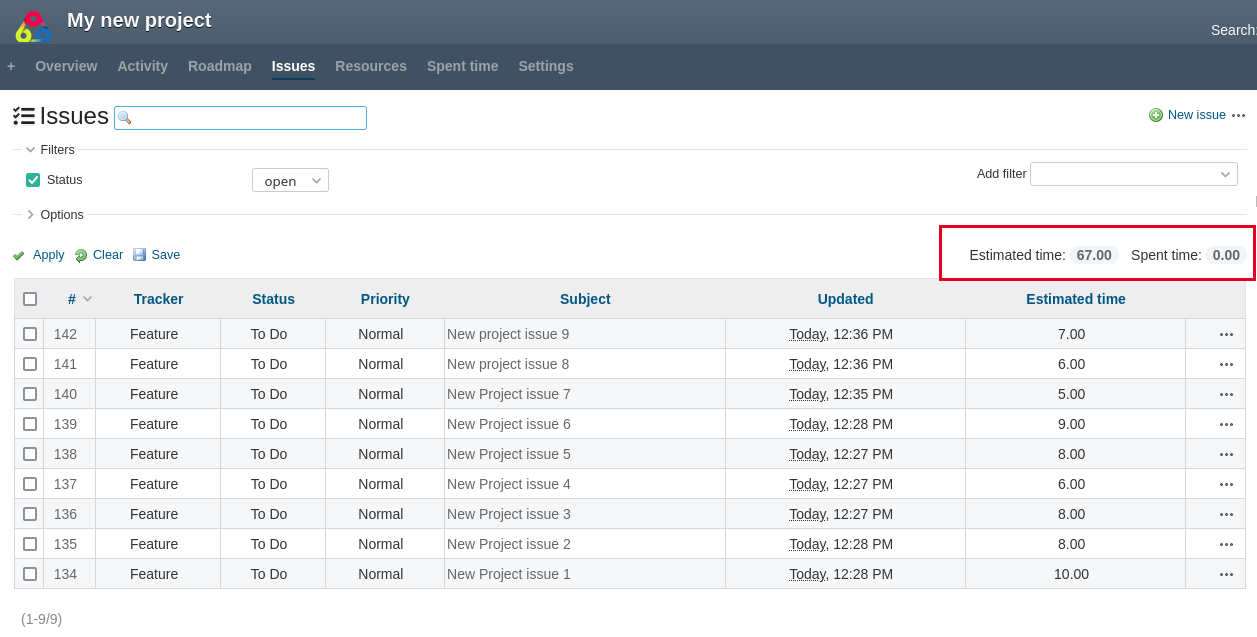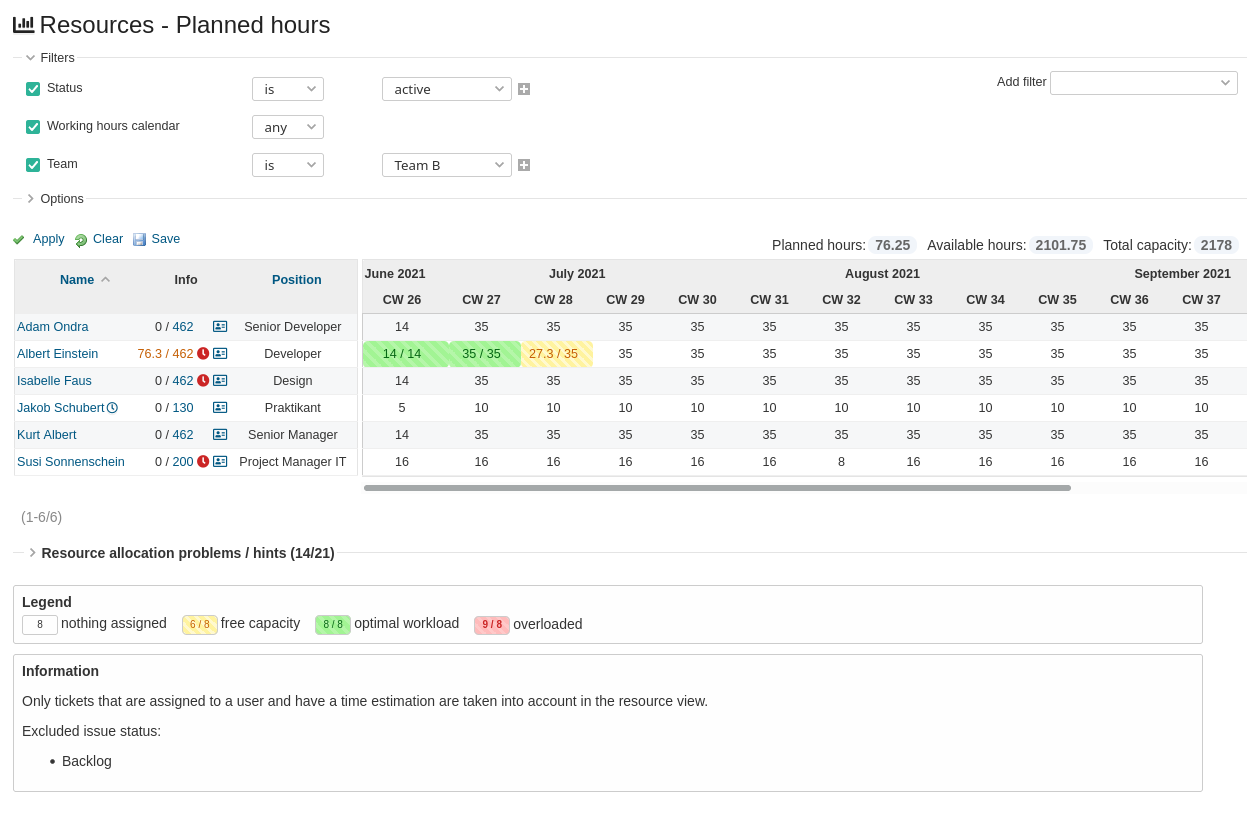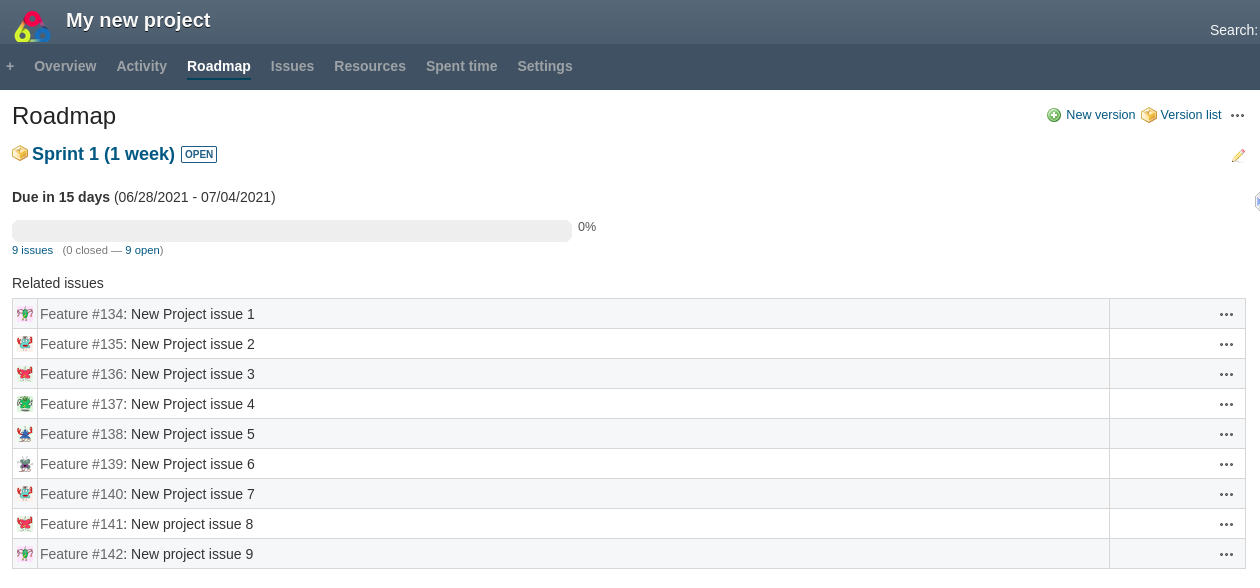A great way to bring more transparency to resource planning and understand when your team has the necessary capacity for a new project is by using the Redmine HRM plugin resource planning tool.
In this article we will show you an option how to get the necessary resources on board for a new project.
What you need for resource allocation in Redmine and how to proceed
- Current Redmine version 4.1x or higher
- Latest Redmine Business-Class Bundle (Reporting & HRM)
Imagine you have several project teams in operation. A new project comes in that has to be scheduled for the next 3 months.
Get an overview
First you want to get an overview of which employees have how many capacities available to complete the tasks. Therefore, you create a new project and create the corresponding tasks including the time estimate for each.
With the help of the issue list and the corresponding columns, you get an overview of the total effort.

As soon as the total estimated time is clear, you open the cross-project resource planning view of the HRM plugin. Depending on how big your team is filter the resource planning view accordingly. You can pick special users or teams by using the available filter options to limit the view to the team and / or user of your choice.
Make sure to select an appropriate future time zone from Options to see the workload of the selected users and when there will be a good time slot for starting your project.
The HRM resource planning works in real time, therefore period selection is always possible from the current day.

In our screenshot, CW 29 onwards would be a good time to start the project. Alternatively, you can start earlier, since only 1 user is still busy with tasks from other projects. The decision is up to you.
Create versions and assign users
Once you know when would be a good time to start, use the Roadmap to create the versions (time periods) in the new project, when which tasks are to be completed.
Assign the issues to the corresponding versions and users.

Make sure that the start and end date of the assigned version is used in the issues. This ensures when the project starts and you can always see in the resource planning exactly whether you are within the time frame (above or below).
Keep track of your project progress
In the resource planning, all issues are listed that:
- have been assigned to an internal user
- have been given a time estimate
- are in a status that is not excluded.
So if you select the planned completion period (in our example the version), you get the possibility to see if the completion is going according to plan or if there will be time problems.

To finish our example: the project related planning view shows, that everything works according to plan. Time buffers even exist:
- The planned hours are within the range of the available hours.
- The correct time period (Version) has been selected for deeper analysis.
- There are currently no problems in the selected project (but probably in other projects, where some of your users are also part of).
Conclusion: Using Redmine HRM to optimize teams and resources
Management of Resources in Redmine can be effortless with the right resource management tool like this one. Redmine HRM may only be one piece of the pie, but it provides a better experience in Redmine when it’s time to do project management and project planning.
Discover more about our resource planning tool for Redmine by visiting the plugin information page. You can also test the functionality in our online demo.
Resource planning is only one part of the plugin function. There are other functionalities integrated, which simplify user administration and enable attendance management and vacation planning.
